| Amount Per 1 slice | |||
| Calories | 440 Kcal (1842 kJ) | ||
| Calories from fat | 279 Kcal | ||
| % Daily Value* | |||
| Total Fat | 31g | 48% | |
|---|---|---|---|
| Saturated Fat | 19g | 95% | |
| Cholesterol | 125mg | 42% | |
| Sodium | 370mg | 15% | |
| Total Carbs | 33g | 11% | |
| Sugars | 24g | 96% | |
| Dietary Fiber | 1g | 4% | |
| Protein | 8g | 16% | |
| Calcium | 1000mg | 100% | |
* Percent Daily Values are based on a 2000 calorie diet. Your daily values may be higher or lower depending on your calorie needs.
Find out how many calories should you eat.
Ingredients And Nutrition Overview
Best
choice Good
choice Poor
choice Avoid
it!
choice Good
choice Poor
choice Avoid
it!
-
WeightWatchers Points: 11.2, PointsPlus: 12, SmartPoints: 21
WeightWatchers Points are estimated by carbohydrates, fats, protein and fiber in product. They are not an affirmation of better quality or nutritional value of the product or its manufacturer. Only way to count for dieters. Less points are better.
Read more at Weight watchers diet review -
6 tsp of sugars per serving
This includes both naturally occurring and added sugars. According to the USDA, every man woman and child in the US consumes approximately 80 pounds of caloric sweeteners per year! That works out to 25 tsp of sugars per day, or 400 extra calories!
-
Very high cholesterol
While cholesterol has been shown to be less harmful than once believed, you should not consume more than 300mg a day. This product has 90 mg of cholesterol or more. If you're on a low cholesterol diet, make sure you pay attention to portion: 10% of your daily allowance can quickly become 50% when a hamburger turns into double cheeseburger AND your allowance has been reduced to 200mg. Trouble sticking to daily goals? Try limiting your meat, cheese and dairy intake to one item per meal and avoid items with multiple sources of cholesterol (like chicken with ham and cheese, breakfast sandwiches with sausage and cheese or bacon cheeseburgers).
-
Contains sodium benzoate / benzoic acid
Sodium benzoate / benzoic acid are used to prevent the growth of microorganisms in acidic foods. They are natural substances. However, in beverages with ascorbic acid (vitamin C), a chemical reaction creates small amount of benzene, a carcinogen. ----------- Sources: 1. Gardner LK, Lawrence GD. Benzene production from decarboxylation of benzoic acid in the presence of ascorbic acid and a transition-metal catalyst. Journal of Agricultural and Food Chemistry 1993;41(5):693–695 2. Bonaccorsi G, Perico A, Bavazzano P, et al. Benzene in soft drinks: a study in Florence (Italy). Igiene e sanita pubblica 2012;68(4):523-32. 3. Li L, Li H, Zhang X, Wang L, Xu L, Wang X, Yu Y, Zhang Y, Cao G. Pollution characteristics and health risk assessment of benzene homologues in ambient air in the northeastern urban area of Beijing, China. Journal of Environmental Sciences 2014;26(1):214-23. · Focuses on benzene in the air vs. food. However, supports cancer risk from benzene exposure 4. Huff J. Benzene-induced cancers: abridged history and occupational health impact. International Journal of Occupational and Environmental Health 2007;13(2):213-21. 5. Smith, MT. Advances in understanding benzene health effects and susceptibility. Annual Review of Public Health 2010;31:133-48 6. Nyman PJ, Diachenko GW, Perfetti GA, McNeal TP, Hiatt MH, Morehouse KM. Survey results of benzene in soft drinks and other beverages by headspace gas chromatography/mass spectrometry. Journal of Agricultural and Food Chemistry. 2008;56(2):571-6.
-
Contains controversial artificial colors
Once upon a time, there were no food colorings. Then folks figured out that food looks better and sells more when it can be enlivened through dyes. For most of food history, the dyes were from natural sources – beet juice for red, turmeric for yellow,etc… However, in the quest to increase color intensity and lower manufacturing costs, cheap artificial dyes were introduced to market. Unfortunately they pose a risk for hyperactivity in children, cancer, and allergic reactions. ----------- Sources: Feingold BF. Hyperkinesis and learning disabilities linked to artificial food flavors and colors. Am J Nurs 1975; 75-5: 797-803. Harley JP, Matthews CG, Eichman P. Synthetic Food Colors and Hyperactivity in Children: A double-blind challenge experiment. Pediatrics 1978; 62: 975-983. Kobylewski S, Jacobson M. Toxicology of food dyes. Int J Occup Env Heal 2012; 18-3: 220-246. McCann D, Barrett A, Cooper A, Crumpler D, Dalen L, Grimshaw K, Kitchin E, Lok K, Porteous L, Prince E, Sonuga-Garke E, OWarner J, Stevenson J. Food additives and hyperactive behavior in 3-year-old and 8/9-year-old children in the community: a randomized, double-blinded, placebo-controlled trial. Lancet 2007; 370: 1560-67. Schab DW, Trinh NT. Do artificial food colors promote hyperactivity in children with hyperactive syndromes? A meta-analysis of double-blind placebo-controlled trials. J Dev Behav Pediatr 2004; 25: 423-434. Sonuga-Barke EJS, Hollis C, Brandeis D, Konofal E, Cortese S, Lecendreux M, Daley D, Wong I, Ferrin M, Sergeant J, Holtmann M, Stevenson J, Danckaerts M, Van Der Oord S, Dopfner M, Dittmann R, Simonoff E, Zuddas A, Banaschewski T, Buitelaar J, Coghill D. Nonharmacological interventions for ADHA: Systematic review and meta-analyses of randomized controlled trials of dietary and psychological treatments. Am J Psychiatry 2013; 170-3: 275-289. Stevens LJ, Kuczek T, Burgess JR, Hurt E, Arnold LE. Dietary sensitivities and ADHD symptoms: Thirty-five years of research. Clin Pediatr 2011; 50:279-293. Williams JI, Cram DM, Tausig FT, Webster E. Relative effects of drugs and diet on hyperactive behaviors: An experimental study. Pediatrics 1978; 61-6: 811-817.
-
Over 50% of daily saturated fat!
Not all fats are created equal. Saturated fats are the ones responsible for bad cholestrol buildup in our blood vessels, as well as contributing to coronary disease. Some recent studies are refuting this claim. They explain that removal of saturated fats from our diet and their replacement with processed carbs has led to an increase in obesity and heart disease. There is no doubt that processed carbs are bad for you. But that does not mean that returning to saturated fats is good.
-
For dieters: FoodPoints value is 12
* FoodPoints are calculated by Fooducate based on fats, carbs, fiber, and protein. They are not an endorsement or approval of the product or its manufacturer. The fewer points - the better.
-
Highly Processed!
This product is highly processed. If you'll take a look at its ingredient list, you'll discover new words to add to your vocabulary. Many of theses ingredients are required to increase the shelf life of the product and improve the flavor that disappears when food is not fresh.
-
Contains high fructose corn syrup
High fructose corn syrup (HFCS) is a highly processed ingredient manufactured from surplus corn, and yielding a cheap replacement to table sugar. In the early 1980’s many food manufacturers started using it instead of sugar as a cost cutting measure. That’s about the same time obesity rates started to skyrocket in the US. Most scientists agree that HFCS is no better and no worse than plain sugar, though some newer studies seem to find the two affect the metabolism differently. Consumption of both should be drastically limited. ---- Sources: Bray GA, Nielsen SJ, Popkin BM. Consumption of high-fructose corn syrup in beverages may play a role in the epidemic of obesity. Am J Clin Nutr. 2004;79(4):537-43. Berkey CS, Rockett HR, Field AE, Gillman MW, Colditz GA. Sugar-added beverages and adolescent weight change. Obes Res. 2004;12(5):778-88. Johnson RJ, Segal MS, Sautin Y, Nakagawa T, Feig DI, Kang DH, Gersch MS, Benner S, Sánchez-Lozada LG. Potential role of sugar (fructose) in the epidemic of hypertension, obesity and the metabolic syndrome, diabetes, kidney disease, and cardiovascular disease. Am J Clin Nutr. 2007;86(4):899-906. Schulze MB, Manson JE, Ludwig DS, Colditz GA, Stampfer MJ, Willett WC, Hu FB. Sugar-sweetened beverages, weight gain, and incidence of type 2 diabetes in young and middle-aged women. JAMA. 2004;292(8):927-34. Ludwig DS, Peterson KE, Gortmaker SL. Relation between consumption of sugar-sweetened drinks and childhood obesity: a prospective, observational analysis. Lancet. 2001;357(9255):505-8. James J, Thomas P, Cavan D, Kerr D. Preventing childhood obesity by reducing consumption of carbonated drinks: cluster randomised controlled trial. BMJ. 2004;328(7450):1237.
-
No whole grains here
Whole grains are a great source of fiber and other nutrients. Fiber is one of the most important nutrients lacking in the modern American diet. Unfortunately, this product does not contain enough whole grains, if any. If there is fiber in here, it's probably added fiber and not naturally occurring. Whole grains are not the only way to consuming fiber, BUT by choosing them instead of processed grains you've made a smart choice. If you'd like to eat a bit better, try for something that contains whole grains.
-
One of the worst products in its category
This product is in the bottom 10% of the products in its category
-
Contains glycerides
Mono and diglycerides are commonly used in processed foods to maintain stability in liquid products and "improve" quality in baked goods. These glycerides could be created using both hydrogenated and partially hydrogenated oils or animal fats. In theory, this may transfer a small amount of trans fats into the product. The glycerides are synthesized into phosphates by reacting with phosphorus pentoxide, a potential environmental hazard. But that's only part of the problem . . . The presence of mono and diglycerides should discourage you from buying a product for more than just these reasons: their inclusion in a product indicates that it is industrially processed. Choose products without mono and diglycerides not only for health reasons, but because you are getting a better quality food item overall.
-
Is propylene glycol anti-freeze?
Propylene glycol is a food and drink additive that is used as a thickener, clarifier, stabilizer and as a carrier for color and flavor. But wait, isn't propylene glycol anti-freeze, the chemical used in your car's engine coolant?! It is the same chemical, yet the FDA categorizes propylene glycol as generally recognized as safe (GRAS), meaning it can be added to foods, drugs and cosmetics. The World Health Organization also considers propylene glycol safe, in certain dosages: up to 25 mg of propylene glycol for every kilogram (kg) of body weight. However, the EU does not treat propylene glycol as a safe food additive. In fact, it is not permitted as a food additive in most European countries due to recent studies in animals. In pets, propylene glycol has been show to: - cause "Heinz Body Anemia" (small clumps of proteins seen in the cells) - reduce the survival time of red blood cell and render them susceptible to oxidative damage (leading to cancer) - potentially cause GI problems, nausea, vomiting and diarrhea! Our recommendation: try and choose products without propylene glycol in the ingredient list.
-
Contains artificial flavors. Learn why
Companies add artificial flavors to products to make them taste better. They are created in a lab and the formulations are guarded as trade secrets. Flavorings can compensate for flavor loss during processing, substitute for ingredients, lower production costs and increase shelf stability. Artificial flavorings are cheaper to source than natural flavors and are perceived as "worse" than natural flavors. They are more stable (and usually less chemically complex) than natural flavors. Artificial flavors are not necessarily bad for you from a health perspective. however, people with food sensitivities or allergies may want to avoid artificial flavors if they are unnamed. You can always contact the manufacturer for more information.
-
Learn about corn syrup, found here
Corn syrup is often used as a sweetener in processed food. It is NOT THE SAME as high fructose corn syrup. Don't be fooled when looking up the amount of sugar a product contains if corn syrup is listed as an ingredient. This is because corn syrup contains 50% sugar, and 50% of another form of carbohydrate known as ""oligosaccharides"", which is pretty close to sugar. If a product has less sugar than you think it should, but contains corn syrup in the ingredient list, you'll know that the missing carbs are those oligosaccharides, not much better.
-
Natural flavors added. Learn why
Companies add flavorings to make products taste better. They are created in a lab and the formulations are guarded as trade secrets. Flavorings can compensate for flavor loss during processing, substitute for ingredients, lower production costs and increase shelf stability. Natural flavorings are more expensive to source than artificial flavors, but tend to be better received by consumers. People sensitive to MSG, vegans, vegetarians and those with allergies should pay special attention to the phrase "natural flavorings" since glutamates, animal products or allergens may be the source of natural flavors. You can always contact the manufacturer for more information.
-
Learn about soy lecithin, found here
Lecithins are oily substances that occur naturally in plants (soybeans) and animals (egg yolks). Soy lecithin possesses emulsification properties. This means it can keep a candy bar “together” by making sure that the cocoa and the cocoa butter don’t separate. It is also used in bakery items to keep the dough from sticking and to improve its ability to rise.
-
Calcium chloride and waste reduction...
Calcium chloride is thought of as OK for your health, though some advise that it could cause slight stomach irritation. When used as an additive in products like jellies or cheeses, it causes the food to firm up. When used in tomato-based products it prevents disintegration. It also adds a tiny bit of saltiness without adding sodium. This additive is a by-product of The Solvay process. In this process, carbon dioxide is mixed with table salt and ammonia to create soda ash (or potash) and other products, like baking soda. One of the problems is that this process produces waste - a lot of waste. As a result of this and other technological advances, the last Solvay plant in the US closed in 1986. But the process continues in other parts of the world. While more and more calcium chloride is removed from the waste in settling ponds or dumped directly into the sea, the issue of what to do with this by-product is still relevant. By using calcium chloride as a food additive, manufacturers are actually reducing the amount of waste that is put back into the environment. Whether this is a "reuse" effort you want to be a part of is up to you . . .
-
Read more about gelatin
Horns and hooves? Not quite. The urban legend that gelatin comes from horns & hooves is not true. But don't make a sigh of relief just yet . . . Gelatin is made from animal skins and bones - often as by-products of the meat and leather industries. If you're avoiding animal products, you probably want to avoid gelatin that is not clearly marked as vegan. Kosher or halal gelatin often comes from fish.
You Might Also Like
% RDI of Main Nutrition Facts
22%
of RDI* (440 calories) 142 g
-
Cal: 22 %
-
Fat: 47.7 %
-
Carb: 11 %
-
Prot: 16 %
-
0%25%75%RDI norm*
Calories Breakdown
- Carbs (29.8%)
- Fat (63%)
- Protein (7.2%)
Get Your Recipe of Health!
Follow RecipeOfHealth on Facebook!


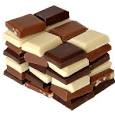
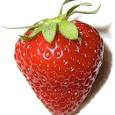
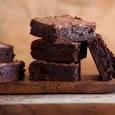
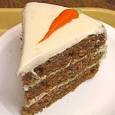

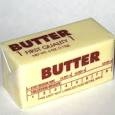
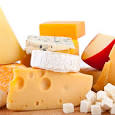
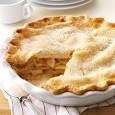
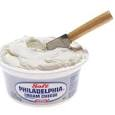
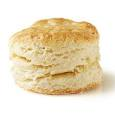

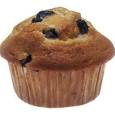
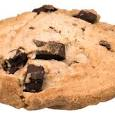
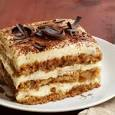
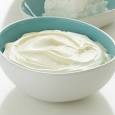
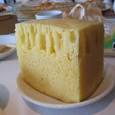
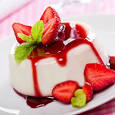

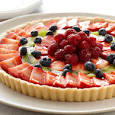











Add your comment